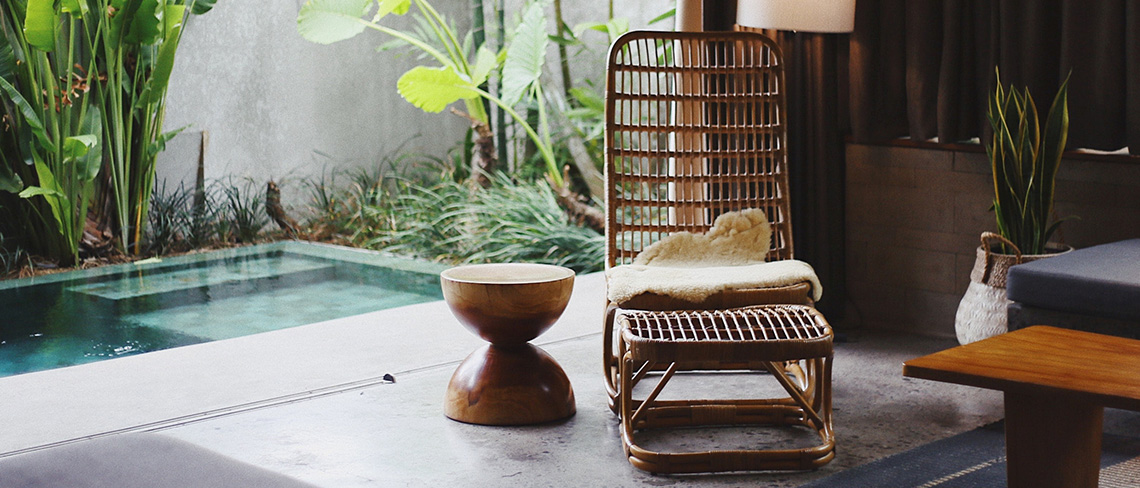
As most of us move to a more isolated and indoor lifestyle this spring, Contura experts provide tips to plan your own natural oasis at home.
Although it’s harder to get outdoors on a regular basis at the moment, studies have shown that just five minutes spent outdoors can help us de-stress and feel more connected to the world(*), with fresh air and exercise cited as a much-needed antidote to the fast pace of modern life.
As being immersed in nature brings only positives to our health and wellbeing and since we’ll be spending more time in our homes for the foreseeable future, it makes sense to bring elements of the natural world into our homes too.
Here, Catharina Björkman, lifestyle expert at Swedish wood burning stove brand, Contura, encourages us to look towards the future and plan an ‘outdoors in’ style home to promote wellbeing and happiness.
Catharina says: “Now is the perfect time to think about how you can add greenery and plants to your home in creative and interesting ways. Time spent indoors needn’t be wasted; instead plan your own indoor oasis and consider how plants can enhance the space and improve the overall layout.
“As a design element plants are incredibly versatile. Whether your home is minimal and clean, or eclectic and busy, plants do so much to soften and add texture. Think about them as you would a piece of art or an ornament, lifting and adding an extra dimension to the space.
“Design trends tend to work on a cycle of between 30 to 40 years, so it’s little surprise that the humble 1970s houseplant is back with a bang in 2020. The trick is to harness houseplant mania in a modern and contemporary way that enhances our homes, without it looking dated.”
Read on for Catharina’s tips in full.
Go green
The benefits of house plants and greenery indoors is twofold. Firstly, plants have air-purifying qualities, absorb CO2 and release oxygen back into their surroundings, while also filtering harmful chemicals. Secondly, plants have calming effects, helping to lower stress and boost wellbeing.
Which plants?
If you’re a green-fingered beginner, start with a fern, cactus, or the tall and thin-leafed mother-in-law’s tongue. Fig trees and dwarf olive trees thrive in sunny spots, whereas for dark corners, the likes of the prayer plant, Baltic ivy (a hardy type of English ivy) and asparagus fern (with soft leaves) are the best choice.
Other easy to care for plant varieties include bamboo, spider plant, aloe vera, succulents, snake plant and peace lily. For areas with little natural daylight, you can also opt for faux plants. Of course, while you get the visual perks, you don’t get the air-purifying benefits.
How to style plants
Grouping plants together gives a greater impact on a space. Stick with the odd number rule and group plants in threes or fives. Mix up how you style plants too, using a combination of hanging plants, wicker, wooden and stone pots to add texture and interest.
For a minimal uniform look, pick the same variety of plant. But if you want to group together along a mantelpiece, go for a mix of different heights and styles of plants – mixing up leafy with spikes and hanging plants.
Zone the space
A ‘plant wall’ can effectively divide up the space to help create zoned areas, such as splitting the kitchen from the living room – this is particularly useful for studio or loft apartments. Keep in mind that a plant wall works best in uniform order, so use the same plant type with similar heights as this will also give the illusion of a more defined zone.
Similarly, ‘living walls’ use panels of plants grown vertically, either free-standing or attached to walls or trellises. This can provide a much-needed greenery boost into a home and create a clever dividing point. In rooms with poor or little natural light, faux foliage can still create an interesting look.
Natural materials
Bringing nature indoors doesn’t only apply to plants. Use materials normally found outdoors and make them a part of your home’s interior décor. Wood, wicker, rattan and stone all work well to bring an outdoor theme inside. A wooden, rustic style ladder can provide a great alternative to polished wood shelving, for example.
Add natural elements throughout the décor; seashells, jars of sand and bunches of branches can all make interesting focal points. Imitate nature by adding outdoor cues such as woody incense and fresh flowers for a floral smell. The same feeling of being relaxed and free in nature can be brought into your home by stimulating the senses.
Outdoor colours
Embrace a natural colour scheme for an understated, calming look. This can apply to the wall and floor colours, curtains and furniture. Use green to evoke the earth, grass and plants, blue for the sky and ocean, and yellow for the sun and flowers. Neutral tones such as white, cream and beige will all make your interiors feel more natural, clean and fresh. Avoid cold, man-made materials and embrace wood, cork and bamboo flooring. These feel warmer underfoot and are a more natural, organic choice.
For more information on Contura, please visit http://www.contura.eu
-Ends-
Notes to editors
- (1) https://www.nature.com/articles/s41598-019-44097-3
- Rooster PR will coordinate comment, interview and profile opportunities for Contura UK Country Manager, Phil Wood. The Contura PR team will also arrange visits to the nearest Contura Design Centre dealerships or the Contura showroom in Doncaster to see the product range.
For further press information, please contact:
Elsa Findlay | Jo Kendall | Julie Aguilera
Rooster PR
T: +44 (0)20 3440 8930
E: [email protected]
About Contura
Contura is Europe’s leading manufacturer of wood burning stoves, offering an extensive range of classic and contemporary wood burners; from traditional insert stoves suitable for existing fireplaces, to freestanding statement models made with innovative materials such as soapstone.
Starting at £1,095, Contura stoves are premium yet affordable. Award winning, timeless Swedish design means the products complement or enhance any style of home, whilst also offering outstanding performance, maximum efficiency, practicality and ease of use.
Designed and assembled at the factory located in Markaryd, Sweden, and manufactured to the highest standards, Contura stoves are highly energy efficient, offering powerful convection, superior combustion technology and clean burning systems. Currently, 95% of Contura stoves are DEFRA Clean Air Act exempt and thus approved for use in Smoke Control Areas.
Contura stoves can be purchased through a network of 165 independent retailers nationwide.
Contura is part of the NIBE group, a Swedish manufacturing company producing world class solutions in sustainable energy across Europe, North America, Asia and Australia.
Contura is a founding member of the Stove Industry Alliance (SIA) in the UK.
For more information please visit www.contura.eu






